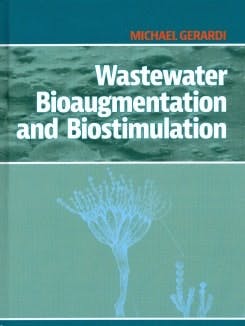DEStech Publications, Inc. announced the publication of Wastewater Bioaugmentation and Biostimulation, by Michael Gerardi.
This book is a guide to understanding and enhancing existing microbial populations in wastewater treatment. It addresses operational problems arising from deficiencies in biomass and shows how these situations can be recognized and corrected. After presenting background on major wastewater microbes, the text explains the types of bacteria used in bioaugmentation and the nutrients, enzymes and growth factors needed to solve processing problems and achieve operational goals; for example, the conversion of starches such as cellulose to soluble sugars. Using numerous case studies, the text focuses on the treatment functions performed by augmented microbes: improved anaerobic biogas production, control of undesired filamentous organisms growth, floc formation, nitrification, odor control, resistance to toxicity, sludge reduction and many more.
Chapters include:
- Bioaugmentation
- Prokaryotes: Activity and Structure
- Bacteria
- Archaea
- Methanogens
- Rumen Microbiology
- Nutrients, Growth Factors and Enzymes
- Case Studies
Source: DESTech Publications, Inc.


